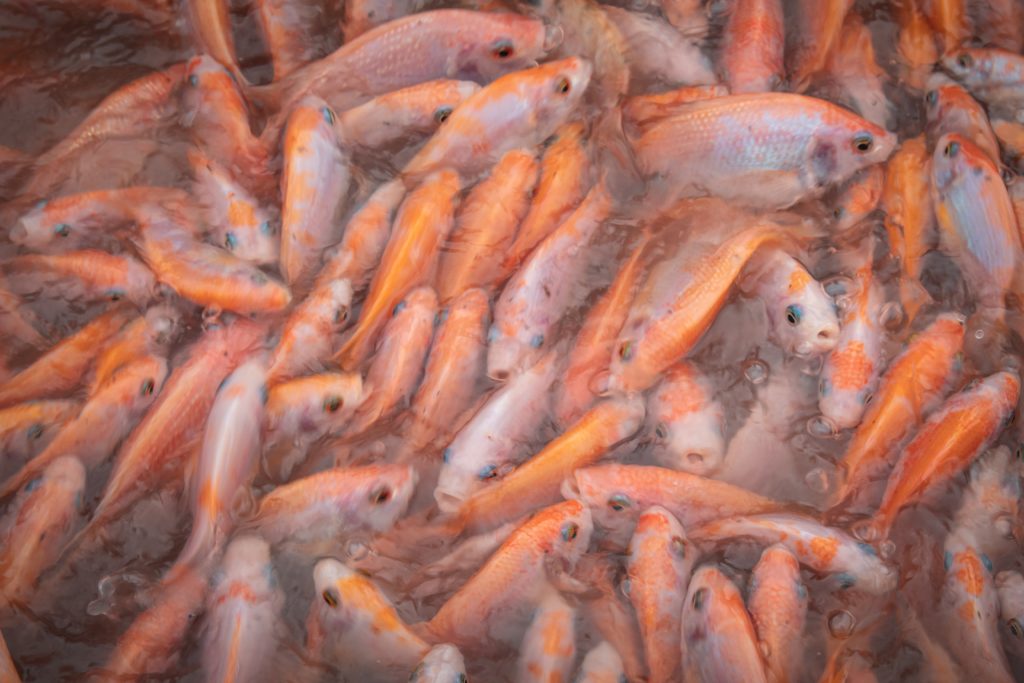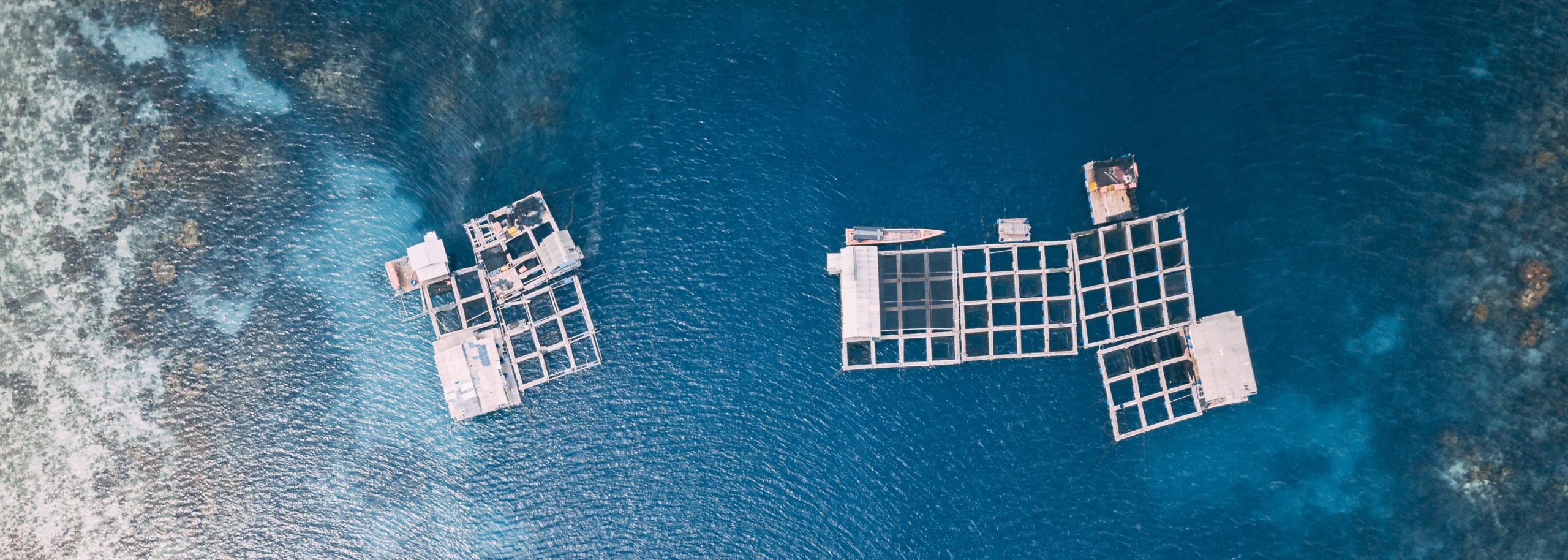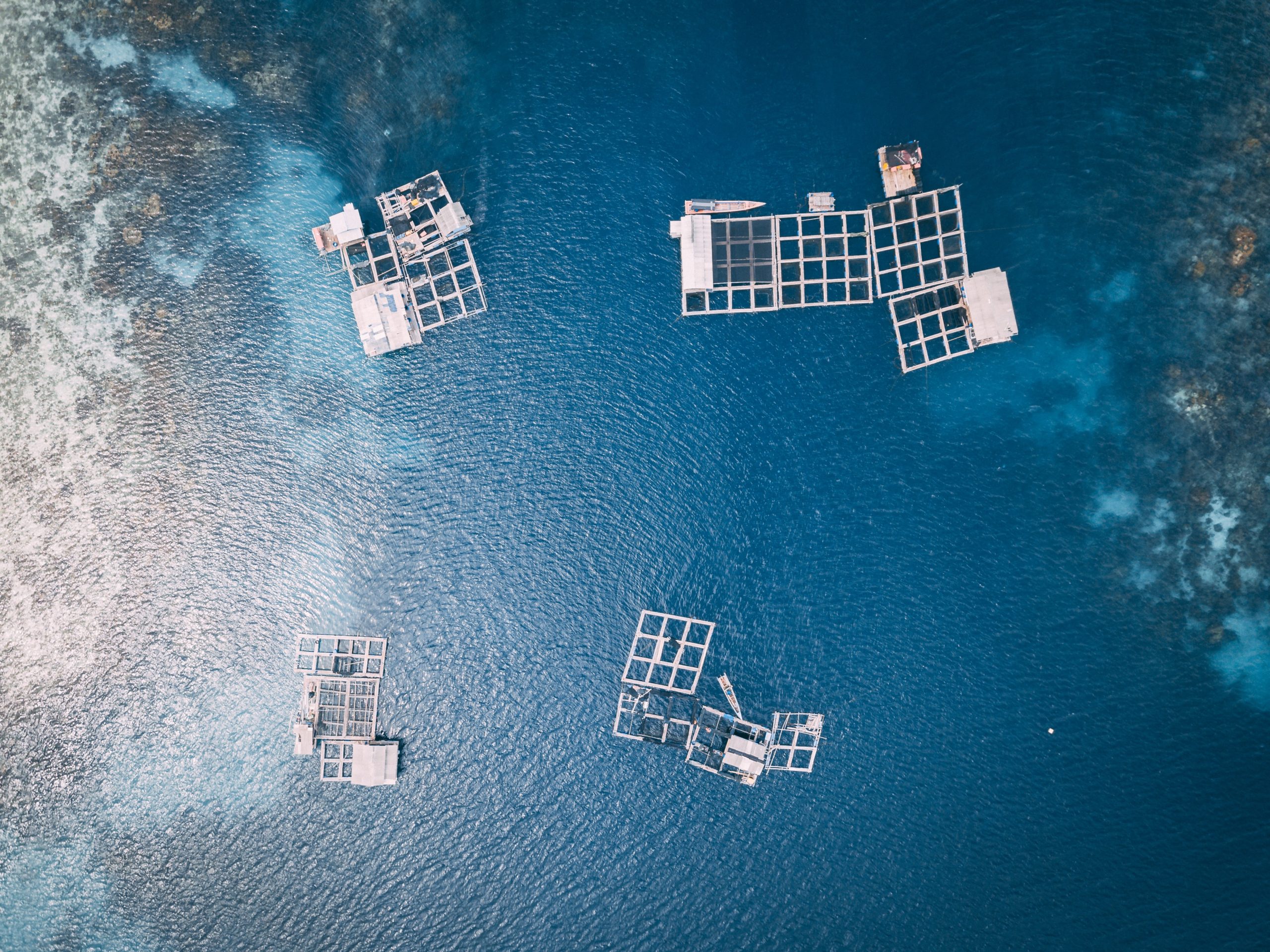Published: 10/17/2022
With demand for fish on the rise, Stanford food security expert Dr. Roz Naylor offers a perspective calling attention to the need for greater oversight of growing antimicrobial use that impacts the health of fish, ecosystems, and humans.
By Jamie Hansen, Communications Manager
Aquaculture plays an important role in creating healthier, more equitable, and sustainable food systems. However, the management of fish diseases in these farms is in many ways a “wild west” that has critical implications for ecosystems and human health, including antimicrobial resistance, according to a leading Stanford food security expert.
While fish farms are critical to meeting a skyrocketing global demand for fish as a more sustainable and nutritious source of animal protein, many aquaculture systems in the Global South are overcrowded and poorly regulated, leading to the overuse of antibiotics to control disease.
“There’s a really tricky trade-off of between wanting to accelerate growth of aquaculture because it provides good nutrition, often with a lower environmental footprint than other animal food sources, and the treatment of disease in these aquatic systems,” says Rosamond (Roz) Naylor, PhD, the William Wrigley Professor of Global Environmental Policy and founding director of Stanford’s Center on Food Security and the Environment.
Naylor’s research covers all aspects of food systems and food policy, including blue foods — marine and freshwater plants, animals, and algae cultivated or caught for food. She co-chairs the Blue Food Assessment, which scientifically evaluates the choices through which decision-makers in the private and public sector can affect positive transformation in the global food system.
She became interested in the challenge of disease management in fish farms while writing a 20-year retrospective of aquaculture published in Nature in 2021. Due to space constraints, the wide-ranging publication only briefly mentioned the use of antimicrobials and the resulting projected rise in antimicrobial resistance—but new research on aquaculture policies throughout the world drove Naylor to explore the issue further.
There’s a really tricky trade-off of between wanting to accelerate growth of aquaculture because it provides good nutrition, often with a lower environmental footprint than other animal food sources, and the treatment of disease in these aquatic systems.
Dr. Roz Naylor
Meeting Growing Demand for a Sustainable Food Source
The world has a growing appetite for fish as people recognize the need to reduce their reliance on red meat due to its health impacts, high carbon footprint, and ecological impact.
“Aquatic systems tend to have a lower carbon equivalent,” Naylor says. “Fish are one option that can help us improve sustainability and still enable people to have an animal source of protein.” They also tend to be highly nutritious, providing protein, omega-3 fatty acids, and a wide range of micronutrients that are beneficial for human health.
As a result, fish is one of the fastest-growing segments of the food economy, with demand expected to nearly double by 2050, Naylor has estimated. With many wild fisheries already over-fished or nearing capacity, aquaculture is important to meet future demand. “So,” she says, “we really need to be thinking about how to ramp up aquaculture in a way that provides sustainable and safe products for human consumption.”
A ‘Wild West’ of Antibiotics in Aquaculture
The rapid development of aquaculture around the world, particularly throughout Asia, Africa, and Latin America, has led to widespread and unregulated use of antimicrobials (antibiotics, antivirals, and antifungals) to control disease, Naylor said.

A floating tilapia fish farm in Vietnam on the Mekong delta, via unsplash.com
“It was really clear from our 2021 review that disease is the big wild card for aquaculture producers,” Naylor said. “It’s the thorn in their side; it’s the one thing that just keeps coming up. As climate change leads to warmer waters, it is expected that pathogens in many aquaculture systems will multiply faster. It is critical that producers do everything possible to avoid disease in the first place, because it becomes difficult to control once in the system. The first line of defense is often the use of antibiotics.”
While most countries in North America and Europe carefully regulate the use of antimicrobials in aquaculture, these regulations have not caught on in many aquaculture markets around the world, she said. While the United States has approved only a handful of antibiotics or antivirals for use in aquaculture, China and Vietnam each use more than 30 different compounds, she says.
“The real growth in aquaculture is happening in countries with widespread antimicrobial use, and evidence of antimicrobial resistance and multi-resistant strains is popping up a lot in the literature,” Naylor adds. “The countries that need the nutrition the most seem to have poor control over what antibiotics are being used, or what it means for human health.”
A number of the antimicrobial compounds used in aquaculture are also used in human medicine,” she said. “My concern is that antimicrobial resistance is just going to spread, and that’s a big public health concern.
Dr. Roz Naylor
The impacts of the antibiotics can linger in the environment long after use in fish farms. They are typically applied through feeds and can fall in feces and food waste to the bottom of ponds, lakes, and reservoirs, or to the ocean floor. In some cases the antimicrobial compounds remain in sediments for years and allow the endemic bacteria in these aquatic systems to become resistant.
This can impact not only fish, but people — especially when the same drugs are used for humans as for fish, Naylor says. “A number of the antimicrobial compounds used in aquaculture are also used in human medicine,” she said. “My concern is that antimicrobial resistance is just going to spread, and that’s a big public health concern.”
Better Alternatives
While antibiotics have become “the easiest first line of defense” to fighting disease in many cases, fish farms have numerous alternatives. Key steps governments and aquaculture producers can take include: spatial planning, clean water, circulation, less intensification, and good reporting and isolation of illness when it arises.
Vaccination can also help: Some countries like Norway, the world’s largest producer of farmed salmon, have virtually eliminated the use of antibiotics by vaccinating their fish.
Perhaps most important, however, is getting and sharing data about antimicrobial use between countries in order to understand the scope of the problem and prevent overuse, Naylor said.
“We need to share training and information so that fish farmers around the world can use a One Health approach to aquaculture that considers the health of animals, humans, and ecosystems at the same time.”
Photo credit: Hanson Wu, Unsplash.com

